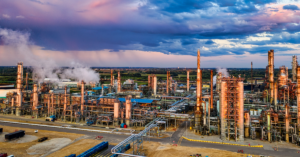In early March, it was reported by Reuters that Toyota Motor Corp had experienced a cyberattack impacting its supply chain. The issue was discovered when Kojima Industries Corp, the plastic parts and electronic components provider to the automaker, realized that it had been hit with a virus, ultimately leading to a temporary shutdown of some of Toyota’s factories. While functions eventually resumed, this incident serves as an example of the vulnerabilities that manufacturers and the plants tied to them face. Therefore, as we look to the future of these industries, it is important to understand that cybersecurity is and will continue to be a foundational element.
Industrial Cybersecurity Market Predicted to Grow
There are many factors contributing to the increasing emphasis on cybersecurity, the growth in threats such as listed above being a major one. But fueling these threats are other trends like those brought on by the pandemic. While opening our eyes to the critical role of supply chains, it simultaneously introduced us to risks including those connected to the shift to remote operations for production floors. Along with that, the rapid adoption of Industrial Internet of Things (IIoT) tech has both progressed efficiency and stirred up new attack opportunities. Considering all of this together, there is obviously a building need to both adapt to the changes occurring and protect systems from the challenges that arise during this process. So, it’s no wonder that the global market for industrial cybersecurity is predicted to reach $22.3 billion by 2026 according to ResearchAndMarkets. As an article for Help Net Security explained, “Rise in government funding and increased spending by organizations to tackle rise in cyber threats will continue to present favorable growth opportunities for the industrial cybersecurity market.”
Adoption of Artificial Intelligence Adds to the Call for Cybersecurity
One of the other developments that Help Net Security listed as an influencer behind the industrial cybersecurity’s market growth is artificial intelligence. Although Automation World reports that large-scale implementation of AI and machine learning in the manufacturing sector may be several years away, this tech is currently finding its way onto some plant floors. Like so many other innovations, AI comes with game-changing benefits from enhancing production to advancing quality control, and issues yet to be worked out. The fact that the use of AI is still fairly new also means that there has not been a standardized framework put into place, which leaves the landscape open to problems like cybersecurity vulnerabilities. To address this, the Industry IoT Consortium (IIC) put together the Industrial IoT Artificial Intelligence Framework (IIAIF). Within the suggestions that the IIAIF outlines, it seeks to offer a collective resource for the many parties that make up the industrial community, including “business decision-makers, product managers, system engineers, use case designers, component architects, system integrators, and plant-floor operators,” as Automation World detailed.
Protecting Manufacturing Requires a “Multi-faceted” and Team Approach
As awareness around the mounting need for cybersecurity measures to protect from varying breaches continues to expand, it should undoubtedly sway the business decisions being made and who is involved in helping to make those decisions. In a piece for Forbes, Matt Morris wrote, “Boards at critical infrastructure industry providers see the brand and cost impacts of these events and are pushing forward the need for an information security leader with strong decision-making authority.” Therefore, CISOs will be an essential part of not only making sure that their organizations stay on top of the threats that could impact them but are also prioritizing the formation of strategies and plans that prepare them to defend from the evolving threat landscape, which is increasingly concerned with threats from nation-state actors based out of places like Russia.
In crafting such cybersecurity strategies, Brian Baker at Security Magazine explains that it will take “a multi-faceted effort.” Some of the steps involved in this type of approach involve establishing an understanding of weaknesses and strengths associated with the organization. This can be accomplished by conducting a risk and cybersecurity audit that looks at details like localized and broad-based threats that exist. In addition to shaping the proper plan, the findings that stem from such a review can act as a guide for what aspects need to be subjected to ongoing monitoring. Maintaining that vigilance also ensures that the strategy is adjusted to and reflects the evolving risks that come with all these incoming trends.
Sources:
- “Toyota to restart Japan production after cyberattack on supplier” – Satoshi Sugiyama, Maki Shiraki and Tim Kelly, Reuters
https://www.reuters.com/markets/stocks/toyota-shares-fall-after-domestic-factory-suspension-2022-03-01/ - “Industrial cybersecurity market to reach $22.3 billion by 2026” – Help Net Security
https://www.helpnetsecurity.com/2021/11/12/industrial-cybersecurity-market-2026/ - “Artificial Intelligence Framework Addresses End User Concerns” – David Miller, Automation World
https://www.automationworld.com/factory/iiot/article/22144288/industrial-internet-consortium-iiot-ai-framework - “2022 Trends To Look Out For In The Industrial Cybersecurity Industry” – Matt Morris, Forbes
https://www.forbes.com/sites/forbestechcouncil/2022/03/30/2022-trends-to-look-out-for-in-the-industrial-cybersecurity-industry/?sh=5cc233c220f9 - “Defending manufacturing facilities from security threats” – Brian Baker, Security Magazine
https://www.securitymagazine.com/articles/97022-defending-manufacturing-facilities-from-security-threats





